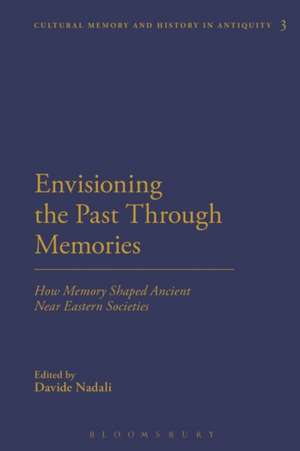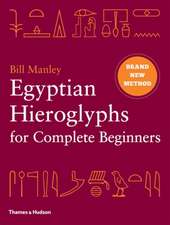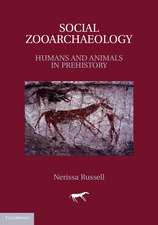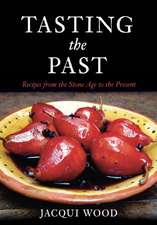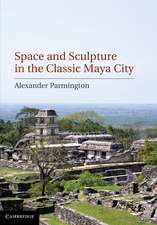Envisioning the Past Through Memories: How Memory Shaped Ancient Near Eastern Societies: Cultural Memory and History in Antiquity
Editat de Dr Davide Nadalien Limba Engleză Paperback – 21 feb 2018
| Toate formatele și edițiile | Preț | Express |
|---|---|---|
| Paperback (1) | 236.19 lei 6-8 săpt. | |
| Bloomsbury Publishing – 21 feb 2018 | 236.19 lei 6-8 săpt. | |
| Hardback (1) | 771.75 lei 6-8 săpt. | |
| Bloomsbury Publishing – 10 aug 2016 | 771.75 lei 6-8 săpt. |
Preț: 236.19 lei
Preț vechi: 271.97 lei
-13% Nou
Puncte Express: 354
Preț estimativ în valută:
45.20€ • 47.13$ • 37.57£
45.20€ • 47.13$ • 37.57£
Carte tipărită la comandă
Livrare economică 20 martie-03 aprilie
Preluare comenzi: 021 569.72.76
Specificații
ISBN-13: 9781350060593
ISBN-10: 1350060593
Pagini: 200
Ilustrații: 34 bw illus
Dimensiuni: 156 x 234 mm
Greutate: 0.29 kg
Ediția:NIPPOD
Editura: Bloomsbury Publishing
Colecția Bloomsbury Academic
Seria Cultural Memory and History in Antiquity
Locul publicării:London, United Kingdom
ISBN-10: 1350060593
Pagini: 200
Ilustrații: 34 bw illus
Dimensiuni: 156 x 234 mm
Greutate: 0.29 kg
Ediția:NIPPOD
Editura: Bloomsbury Publishing
Colecția Bloomsbury Academic
Seria Cultural Memory and History in Antiquity
Locul publicării:London, United Kingdom
Caracteristici
Focuses on the different patterns of memories: preservation, selection and cancellation (forgetting) of past memories according to sociological and political choices
Notă biografică
Davide Nadali is Lecturer in Near Eastern Archaeology at the Sapienza University of Rome, Italy.
Cuprins
AcknowledgementsIllustrationsIntroduction, by Davide Nadali1. Preserving the Memory of the Mythical Origins: The King's Role Between Tradition and Innovation, by Paolo Matthiae2. The Emergence of Writing and the Construction of Cultural Memory in Egypt, by Federico Contardi3. Community and Individuals: How Memory Affects Public and Private Life in the Ancient Near East, by Davide Nadali4. Embodying the Memory of the Royal Ancestors in Western Syria during the Third and Second Millennia BC: The Case of Ebla and Qatna, by Nicola Laneri5. The Historical Memory of the Late Bronze Age in the Neo-Assyrian Palace Reliefs, by Mehmet-Ali Ataç6. Prioritized Presence: Rulers' Images in the Neo-Assyrian Palace as Devices of Elite Ideological Memory, by Amy Gansell7. The Many Falls of Babylon and the Shape of Forgetting, by Seth Richardson8. War Remembrance Narrative: Negotiation of Memory and Oblivion in the Mesopotamian Art, by Silvana Di Paolo9. From Ancient Egypt to the Mississippi Delta: a comparative approach to Cultural Memory and Forgetting, by Martin BommasIndex
Recenzii
When we look at the Middle East today, there has never been a more significant time for us to think critically and creatively about memory and its multiple, complex roles in the construction, manipulation and demolition of cultural identities. Every day our news media deliver stories of shocking transformations to the tangible and intangible manifestations of memory that constitute the rich archaeological, historical and cultural records of the region. But the past of the Middle East has never been static, never 'set in stone', always contested and put to work in ways divisive, inclusive, exclusive and subversive. In this thoughtful and stimulating volume, the authors explore specific case studies illuminating the role of memory, and memory loss, in multiple historical trajectories from ancient Egypt and Iraq/Mesopotamia. All scholars and students of the past have much to learn from engaging with their innovative approaches and interpretations.
This rich and stimulating collection of essays represents the latest clarion call to expand the purview of ancient Near Eastern art and archaeology. By exploring some of the ways in which societies encoded their memories of a collective past in texts, objects and places, the authors encourage a reconsideration of traditional readings of this evidence. These wide ranging explorations of the construction and transmission of cultural memory are a significant contribution to a better understanding of how the presence of the past within ancient societies helped to shape their futures and will surely inspire further investigation.
This rich collection of essays explores the diverse ways in which memory studies can offer new perspectives on the distant past. The contributors investigate archaeological, textual and visual evidence in their thought-provoking analyses of how memory - both remembering and forgetting - was an essential facet of ancient Near Eastern life.
This rich and stimulating collection of essays represents the latest clarion call to expand the purview of ancient Near Eastern art and archaeology. By exploring some of the ways in which societies encoded their memories of a collective past in texts, objects and places, the authors encourage a reconsideration of traditional readings of this evidence. These wide ranging explorations of the construction and transmission of cultural memory are a significant contribution to a better understanding of how the presence of the past within ancient societies helped to shape their futures and will surely inspire further investigation.
This rich collection of essays explores the diverse ways in which memory studies can offer new perspectives on the distant past. The contributors investigate archaeological, textual and visual evidence in their thought-provoking analyses of how memory - both remembering and forgetting - was an essential facet of ancient Near Eastern life.
